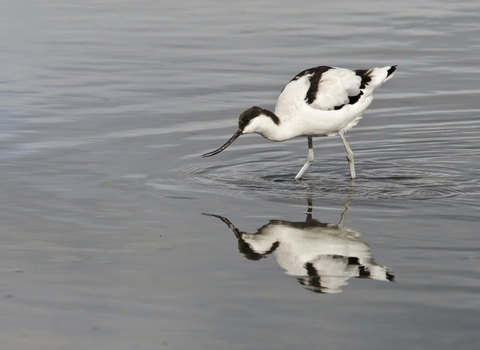
©Bertie Gregory/2020VISION
Avocet
A key species in the story of conservation, the avocet represents an amazing recovery of a bird once extinct in the UK. This pied bird, with its distinctive upturned bill, can now be seen on marshes and estuaries in the East and South West.
Scientific name
Recurvirostra avosettaWhen to see
January to DecemberSpecies information
Category
Statistics
Length: 42-46cmWingspan: 78cm
Weight: 280g
Average lifespan: 7 years
Classified in the UK as Amber under the Birds of Conservation Concern 5: the Red List for Birds (2021). Protected in the UK under the Wildlife and Countryside Act, 1981.
Habitats
About
A scarce wader, the avocet is about the same size as an oystercatcher, but much more slender. It feeds on aquatic insects, worms and crustaceans, which it finds by sweeping its bill from side-to-side in shallow water. It is often seen on estuaries and mudflats at the coast where it breeds on exposed mud in a dug-out scrape.How to identify
Avocets are mainly white, with black patches on the back and wings, and a black cap stretching down the back of the neck. They have long, blue legs, but are most easily recognised by their long, black, upturned bills.Distribution
Breeds in shallow coastal lagoons around the east coast of England and winters on sheltered estuaries on the south coast. Small numbers are now beginning to breed at inland saline lagoons, including in Worcestershire.Did you know?
Avocets, or 'pied avocets' as they are known globally, are a great conservation success story: extinct in the UK during the 19th century, this beautiful bird was given a lifeline during the Second World War when it was able to recolonise the beaches of East Anglia which were closed and flooded as a defence against invasion.Watch
Avocet by Tom Hibbert (https://vimeo.com/441342308)
Avocet by Tom Hibbert
